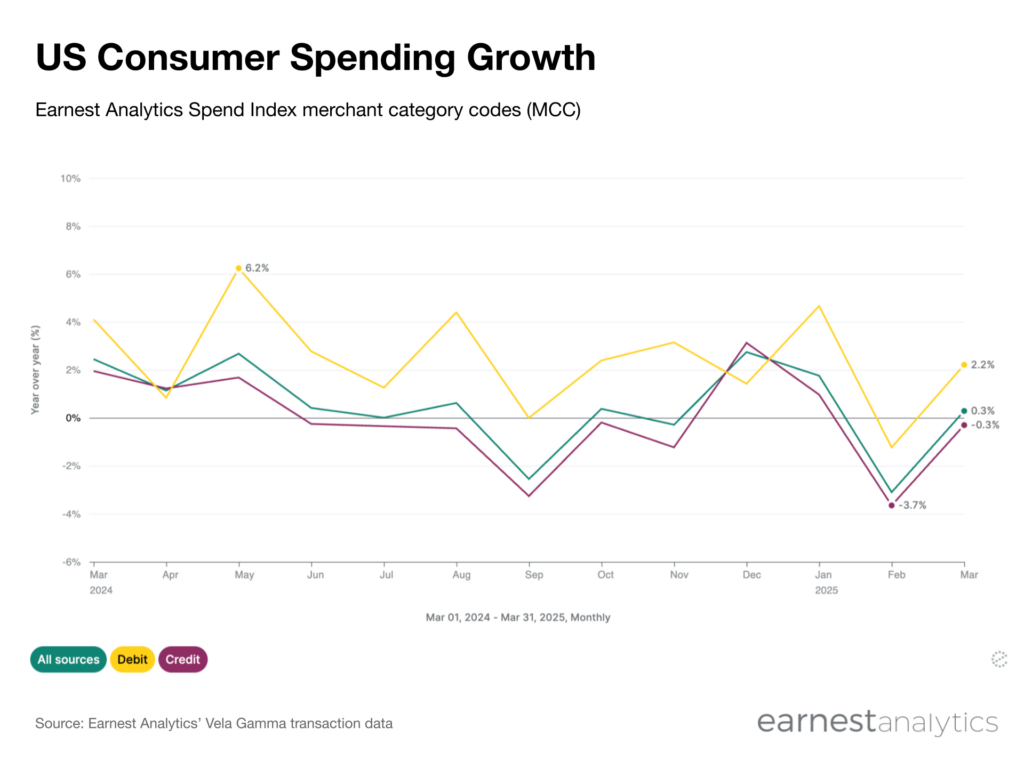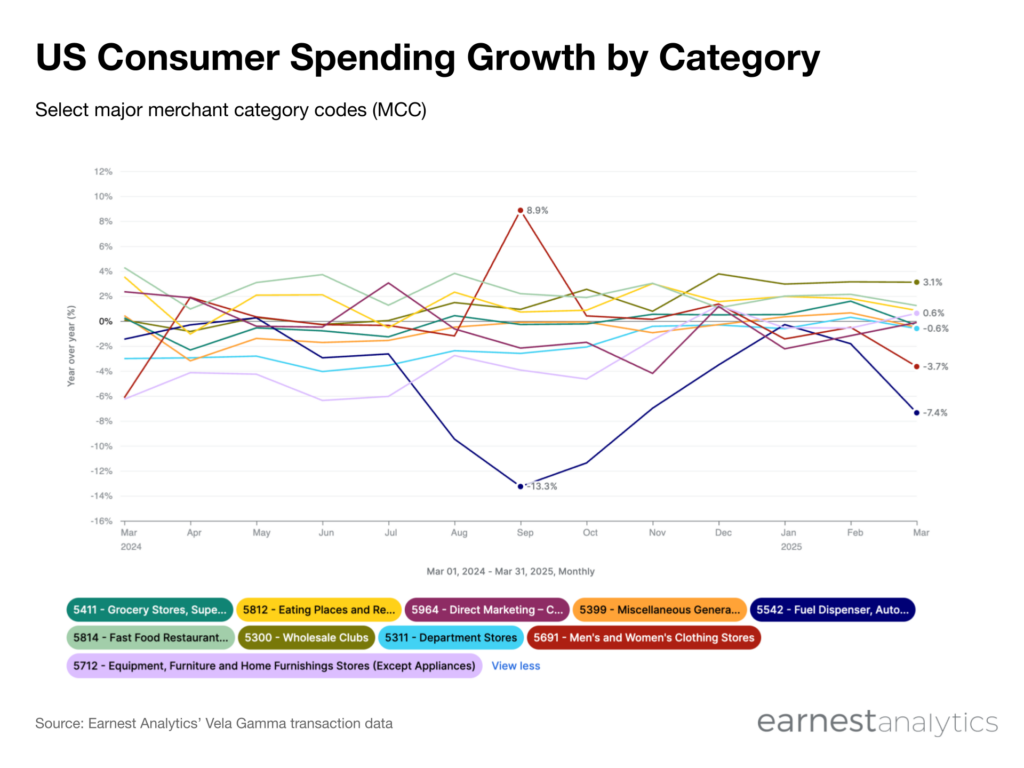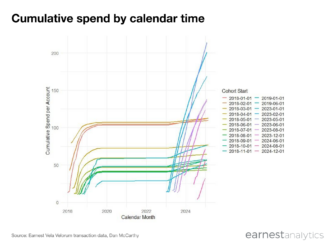March 2025 US Consumer Spending: second month of flat growth

US consumer spending flat in March
March 2025 US consumer spending was essentially flat YoY according to the Earnest Analytics Spend Index powered by Vela Gamma transaction data. This is unchanged from 0.3% growth in February once adjusted for lapping the 2024 Leap Day (chart displayed does not include adjustment). Both February and March grew 150pbs slower than January. Growth since February 28th’s economic boycott has largely been flat YoY amid policy uncertainty around tariffs and de minimis laws. March 2025 is lapping an earlier than usual Easter 2024 and may have impacted spending.
Clothing and General Merchandise led spending decline
Results from US consumer spending by merchant category codes (MCC) in descending order of total sales:
- Grocery Stores, Supermarket (5411), which includes major grocers like Kroger and Publix, fell 0.3% YoY
- Eating Places and Restaurants (5812), which includes casual restaurants like Olive Garden and Chili’s grew 0.8% YoY
- Direct Marketing–Catalog Merchants (5964), which includes online ecommerce like Amazon and Temu, fell 0.1% YoY
- Miscellaneous General Merchandise Stores (5399), which includes Walmart and Target, fell 0.5% YoY
- Fuel Dispenser, Automated (5542), which includes Shell and Exxon, fell 7.4 YoY
- Fast Food Restaurants (5814), which includes McDonald’s and Starbucks, grew 1.2% YoY
- Wholesale Clubs (5300), which includes Costco and Sam’s Club, grew 3.1% YoY
- Department Stores (5311), which includes Nordstrom and Kohl’s, fell 0.6% YoY
- Men’s and Women’s Clothing Stores (5691), which includes Old Navy and Abercrombie, fell 3.7% YoY
- Equipment, Furniture, and Home Furnishings Stores except Appliances (5712), which includes Wayfair and Williams Sonoma, grew 0.6% YoY

This economic report is published monthly as data is available.
About the Earnest Analytics Spend Index:
The Earnest Analytics Spend Index (EASI) is an alternative data-driven measure of consumer spending that tracks spend across 89 merchant category codes (MCC), encompassing thousands of US merchants. The near real-time data is derived from the credit and debit spend of millions of de-identified US consumers. Advantages of using EASI include faster macro signals and insight into geographic, shopper income, and credit vs debit trends.
Historical numbers can vary due to methodology updates.
Request macro trends details










